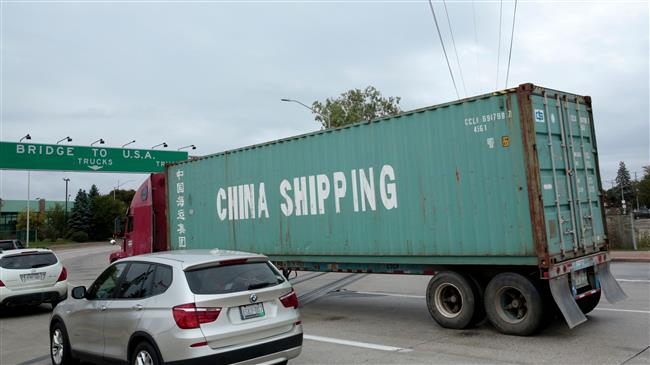US trade deficit jumps to six-month high in August despite Trump tariffs
The US trade deficit spiked in August to its highest level in six months as exports of tariff-targeted goods fell and imports hit a record high, suggesting that the trade war with China could lower economic growth in the third quarter.
The US Commerce Department said on Friday the trade gap widened to $53.2 billion in August, an increase of 6.4 percent, from $50 billion in July.
The trade gap — the difference between what America sells and what it buys abroad — was $50 billion in July.
Exports of goods and services fell 0.8 percent to $209.4 billion in August. Soybean exports dropped $1.0 billion and shipments of crude oil fell $0.9 billion. Imports of goods and services increased 0.6 percent to a record $262.7 billion in August.
The politically sensitive goods trade deficit with China surged 4.7 percent to a record high of $38.6 billion. The trade gap with Mexico hit $8.7 billion -- both the highest monthly totals ever.
The trade deficit continues to widen despite President Donald Trump’s “America First” policies, which have led to a bitter trade war between the United States and China. Washington has also engaged in tit-for-tat import duties with Canada, Mexico and the European Union.
The jump in trade deficit suggests that trade could subtract as much as one percentage point from gross domestic product in the third quarter.
In September, Trump announced 10 percent tariffs on $200 billion worth of Chinese goods and China slapped $60 billion in retaliatory tariffs on US goods. The American tariffs would rise to 25 percent in January.
Trump initially imposed 25 percent tariffs on $50 billion on Chinese imports in the summer and has threatened to target everything China sells to the United States.
Higher tariffs would have both positive and negative effects for the country imposing them. Consumers would face higher costs as the prices of imported goods reflect the higher tariffs. On the other hand, they might turn to domestically produced goods, boosting their nation’s economy.
Israel admits assassinating Hamas leader, vows to inflict same fate on Yemeni fighters, people
VIDEO | Yemeni forces repel US-British attack, down F-18 Jet
Iran’s capabilities vast; enemy’s ‘maximum pressure’ policies all failed miserably: Senior official
Iran’s economy grew 2.7% y/y in Sep quarter: CBI
VIDEO | Freelancers in Gaza strive to stay online amid genocide
Mikati demands Israel's withdrawal from south Lebanon
Yemeni army strikes Israeli military sites with drones
‘Clock ticking’: UNRWA slams unjustifiable killing of children in Gaza











 This makes it easy to access the Press TV website
This makes it easy to access the Press TV website